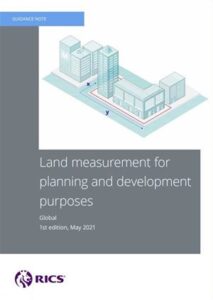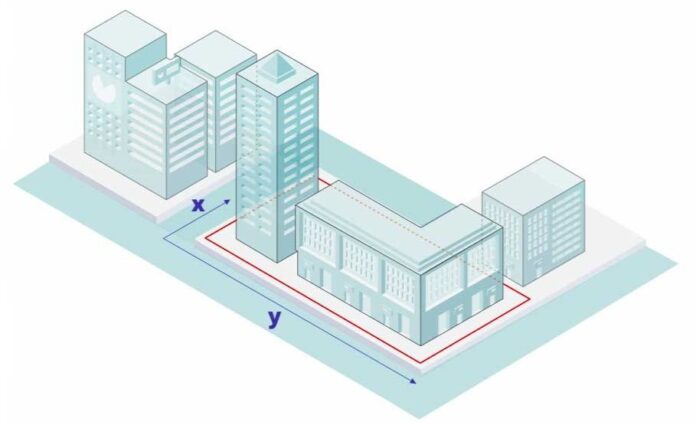The Royal Institution of Chartered Surveyors (RICS) has published new guidance on the measurement of land for development projects, such as new housing and commercial developments. The guidance, to be used by planners, surveyors, developers, architects, government and legal administrators around the world, defines common measurements used across the built environment and associated metrics, such as density.

Land ownership area (LOA): An area of land, measured on a horizontal plane, which is held in a single legal interest or title by one or more legal owners, which may be the subject of a proposed or actual sale, letting or other disposal, valuation or compulsory purchase, and which may comprise all or part of that single legal interest or title.
Site area (SA): The total land area on which development authorisation is sought, measured on a horizontal plane.
Net development area (NDA): The extent of the site area upon which one or more buildings or other operations and their ancillary space can be built, measured on a horizontal plane.
Plot ratio (PR): The ratio of total development floor area to SA. Development floor area may be measured as gross external area (GEA) or gross internal area (GIA) but whichever is used or modifications of them should be clearly stated.
Floor area ratio (FAR) and floorspace patio (FSR) are similar terms, used interchangeably in some jurisdictions to reference the same point. For consistency, PR should be used wherever possible. Where jurisdictional requirements are for the use of either FAR or FSR, PR should be reported as well.
Site coverage (SC): The ratio of ground floor area (measured in accordance with GEA) to SA, expressed as a percentage.
A key difference with the new guidelines is that calculations of density should now always be expressed in terms of gross density (based on SA), rather than on a net basis, with net density providing an additional and complementary metric for understanding the intensity of development of a site.
The Measurement of land for planning and development purposes can be read here.
“In doing so it establishes international best practice to be used whether buying, selling, evaluating, valuing or developing land.
“This has the potential to profoundly improve consistency, once in regular use, to the benefit of both professionals and the general public alike, in countries around the world.”



